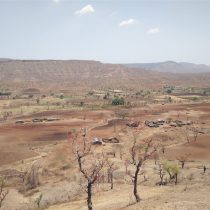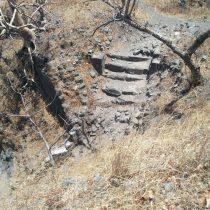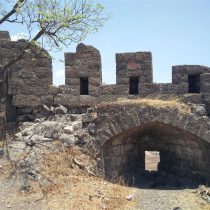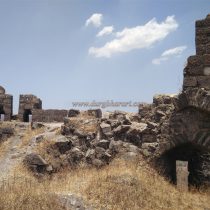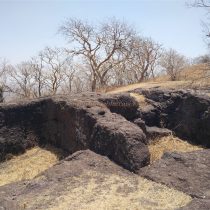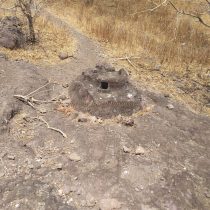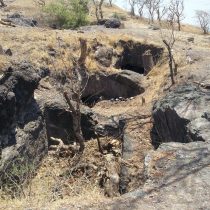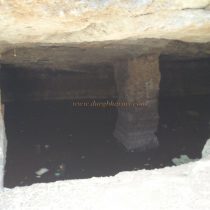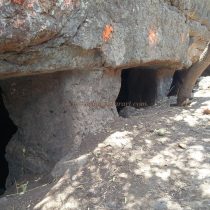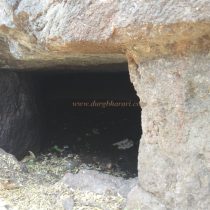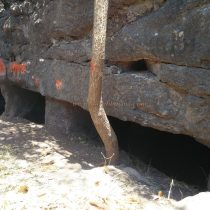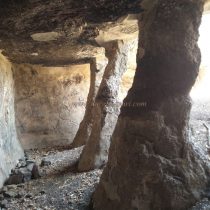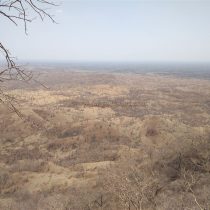MAILGAD
TYPE : HILL FORT
DISTRICT : BULDHANA
HEIGHT : 1750 FEET
GRADE : MEDIUM
Mailgad is the only hill fort in the Buldhana district. This fort is located in Jalgaon Jamod taluka in the Satpuda mountain range on the border of Maharashtra and Madhya Pradesh. According to the Gazetteer of Buldhana district and the history of Varhad, the fort was built by the Nawab of Achalpur, but considering the caves and pillars on the fort, the fort must have existed before the Nawab of Achlapur. Seeing the construction of the bastion at the end of the fort, the Nawab of Achalpur may have rebuilt it to some extent. Raipur is a village at the foot of the Mailgad fort, 18 km from Jalgaon Jamod taluka and 50 km from Khamgaon city via Nandura. Due to the lack of transportation facilities to reach the fort, private vehicles are more convenient. Before entering the village of Raipur, one can see the hill of Mailgad fort on the left and a huge bastion.
...
Before entering the village, an unpaved road leads to a settlement of 5-6 houses under the fort. The road from there takes us directly to the base of the fort. Although there is water on the fort, it is not drinkable as it is not in use, so to fill water from the hand pump in this settlement. Due to the village deity on the fort, the locals are visiting the fort from time to time. The path to the fort leads from the adjoining hill to the bastion at the end of the fort and from there to the ramparts in the middle of the fort. The fortifications at the top of the fort have a square bastion and some ramparts at the bottom. This place should have been the first gate of the fort but today only the adjacent ramparts and the bottom of the gate remain. From here we reach the second east-facing gate on the ramparts of the fort. The arch of the gate has completely collapsed, but the adjoining bastions remain. Both these bastions have small water cisterns carved in the rock. The top of the fort is spread over 5 acres from south to north and is 1734 feet above sea level. Fort round should start from the rampart on the right side of the door, i.e. towards the big bastion you see below. Along the way, you see some carvings on the rocks. In some places, it is mentioned that this carving is a replica of this fort but there is a big difference between the size and shape of the fort and this replica. Currently, this stone carving is being worshiped. At the north end of the fort, there is a well-maintained bastion. It is not a single bastion, but three bastions connected at the ends. From here, on reaching the ramparts, you can see 6-7 dry cisterns carved in the rock on the hill on the left side. The stones obtained from this cistern may have been used in the construction of the bastion. On reaching here, there are two dry pillared cisterns and a large pillared cistern. Even if it contains water, it is not drinkable. From here, on the way to the ramparts, you can see 6-7 cisterns carved on the slope at regular intervals. All these cisterns are extinguished with soil up to some extent. The curtain wall on the ramparts is filled with mud so that the bastions on the outside are not visible but if observed, their construction can be seen. When you come to the ramparts towards Raipur village, you can see a cave weighed on six pillars, but the pillars of this cave are much worn out. Adjacent to it is a two-pillar warehouse carved into the rock at a distance, and next to it is a partially excavated cave. From here you come to the door you entered the fort from and your fort round is completed here. 1 hour is enough to reach the fort from the base and half an hour is enough to see the entire fort. Payanghat was the major route to travel from Barhanpur in the north to Vidarbha. Mahelgad aka Mailgad fort was built to protect this route. In history, this fort is mentioned as the fort of Jamod. In the 18th century, in 1724, Asafjaha separated from the Mughals and started his alliance of Nizamshahi of Hyderabad. He appointed Ismail Khan as the governor of the province. As his major place was Achalpur, he was known as the Nawab of Achalpur. It is believed that he built this fort in 1757. Around 1801, when Ghazikhan gathered his army at Varada and started looting, Raghuji Bhosale II sent 5,000 troops to attack him. At that time Ghazi Khan took shelter in Mailgad fort but as soon as the cannons started firing at the fort, Ghazi Khan fled. The fort was under the control of Raghoji Bhosale of Nagpur for some time around 1841 but later it came under the control of Nizam.
© Suresh Nimbalkar

